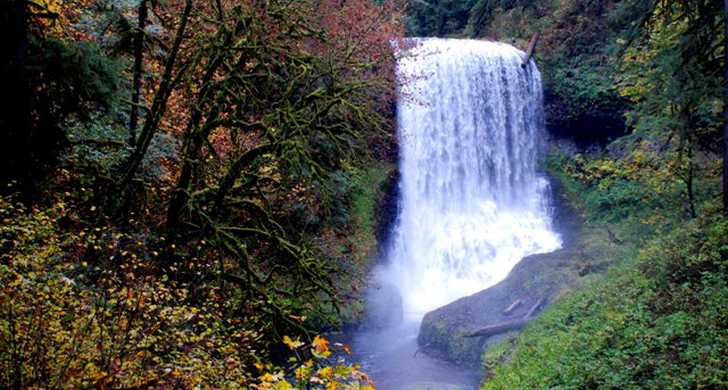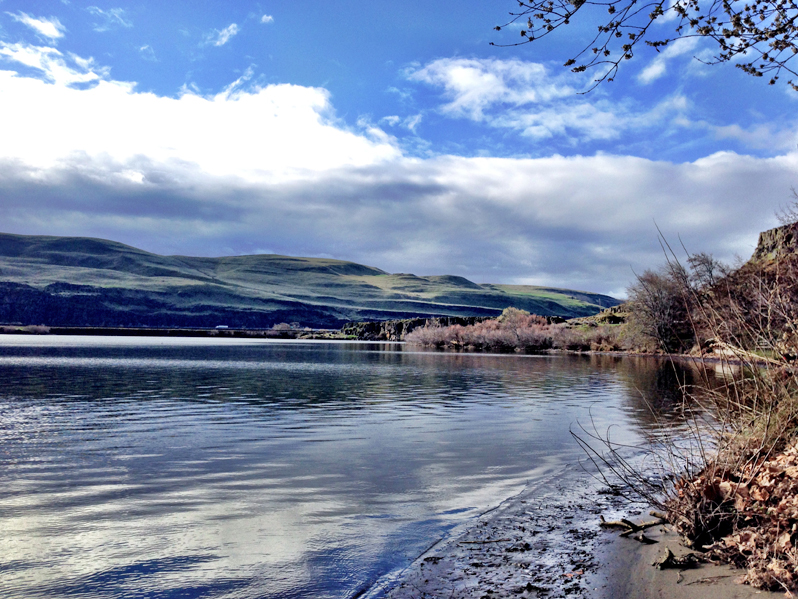Columbia Basin Restoration Initiative
The Warm Spring Tribes, Yakama Nation, Umatilla Tribes, and Nez Perce Tribe collaborated with Oregon and Washington on the Six Sovereigns’ Columbia Basin Restoration Initiative: a comprehensive strategy for salmon and steelhead recovery in the Columbia Basin that also takes into account and addresses the needs of other river stakeholders such as the transportation, agriculture, energy and recreation industries.
Click here to learn more about this initiative.
News
 Climate Boot Camp
Climate Boot Camp
Register for the 2014 Climate Boot Camp to be held at Silver Falls State Park, Silverton, Oregon, August 11th through August 16th! Applications are due by May 12 at 5 PM. Tribal graduate students...
 A Memorial to Those Lost; A Reminder to Those Who Remain
A Memorial to Those Lost; A Reminder to Those Who Remain
On April 4, I joined around 250 others who had come to Columbia Hills State Park outside Dallesport. We gathered there to bless the river and fishers, asking the Creator for a safe fishing season....
 New Research Boat
New Research Boat
The CRITFC Fish Science team recently received delivery on a new research boat. It is 26 feet long and 8½ feet wide. It has two 150 horsepower motors. The boat was purchased with Bonneville Power...
 2014 River Forecast
2014 River Forecast
The annual spring snow pack melt is called a freshet. Freshets help flush salmon smolts downriver quickly, but also make it dangerous for fishers out on the water and along banks. CRITFC monitors...
Putting Fish Back in the Rivers
Science & Restoration
CRITFC provides its member tribes and the region with invaluable biological research, fisheries management, hydrology, climate change analysis, and other science to support the protection and restoration of Columbia Basin salmon, lamprey, and sturgeon.
Learn More
Tribes & Culture
The Columbia Plateau tribes have a connection to salmon and other First Foods native to the region, have extensive relationships with one another, and a shared commitment to protecting and restoring salmon to ensure future generations can have this sacred food.
Learn More
Climate Change
Climate change represents a threat to both the ecosystem and traditional cultures that are based on them. The tribes are preparing for this change, including climate forecasting and habitat projects designed to help cool down tributaries.
Tribal Fishers
Get the latest fishery announcements, information about safe fishing practices, or review upcoming food safety workshops. Learn more about CRITFC's Salmon Marketing Program to support the needs of Native fishers who sell their harvest to the public.
Learn More
Four Tribes United in Action
Since time immemorial, the tribes and bands along the Columbia River have lived intertwined with the fish that run the river’s course. The Confederated Tribes and Bands of the Yakama Nation, the Confederated Tribes of the Umatilla Indian Reservation, the Confederated Tribes of the Warm Springs Reservation of Oregon, and the Nez Perce Tribe have unique cultural practices, dialects, homelands, and histories. Nonetheless, the tribes share a common vision of the significance of salmon.
For millennia, the tribes managed legendary fisheries, most notably at Celilo Falls. Even traditional harvests that took between 6 and 11 million fish from the river each year for ceremonial, subsistence, and trading purposes left plenty of salmon to feed the land and replenish that abundance—time-tested evidence of sustainability. After water, salmon is the first food honored in tribal ceremonies. Additionally, salmon plays a central role in the region’s environment. Salmon is a keystone species supporting Pacific Northwest ecosystems, a fact stressed in tribal legend and only now becoming fully appreciated by science.

The salmon was put here by the Creator for our use as part of the cycle of life. It gave to us, and we, in turn, gave back to it through our ceremonies. — Carla HighEagle, Nez Perce elder

Celilo still reverberates in the heart of every Native American who ever fished or lived by it. They can still see all the characteristics of the waterfall. If they listen, they can still hear its roar. If they inhale, the fragrances of mist and fish and water come back again.” —Ted Strong, Yakama elder
Together, the four tribes formed the Columbia River Inter-Tribal Fish Commission in 1977, charging it with the mission of “ensuring a unified voice in the overall management of the fishery resources.” In the decades since its founding, this organization has grown to become an internationally known and respected champion of tribal rights and resource protection and an authoritative entity working on behalf of native fish and native people in the Columbia River Basin. Its staff of legal experts, biologists, hydrologists, enforcement officers, and public information specialists supports fisheries management, fishery science, fisheries enforcement, policy development, outreach, and watershed restoration. It also supports the tribes’ natural resources programs with technical expertise and regional coordination.
CRITFC operates on a consensus model. Each member tribe has one vote and action may only be taken on the agreement of all four tribes. This unity gives the four tribes an ability to speak with one voice amid the many governmental and non-governmental voices of salmon management. This unified voice is invaluable in the member tribes work with local, state, tribal, regional, and federal representatives on habitat restoration and protection, hydropower operations, harvest management, and hatchery reform.
CRITFC brings tribal views to the table in an effort to ensure that salmon are provided the respect accorded by tribal cultural beliefs and required under law. It also allows the tribes to develop common strategies to educate non-Indians on the importance of salmon to the environment, culture, economy, and ultimately the entire region’s well being. No other entity in the Columbia River Basin acts with such purpose.
The organization provides support as requested to each of its member tribes’ fisheries programs to support their efforts to restore salmon and watersheds within their own territories. CRITFC, together with its member tribes’ fisheries programs, enables the tribes to advocate views and protect treaty rights at all levels. In working to restore salmon and rivers, its work benefits all the citizens of the region. By accepting the challenge of restoring salmon to the rivers and streams and implementing the treaties, the four tribes acting together through the of the Columbia River Inter-Tribal Fish Commission have turned the tide and restored the commitment that tribal people expected under their treaties.
CRITFC
Columbia River Inter-Tribal Fish Commission
Our Mission is to ensure a unified tribal voice in the management of Columbia River basin fishery resources and to protect the reserved treaty fishing rights of our member tribes.
